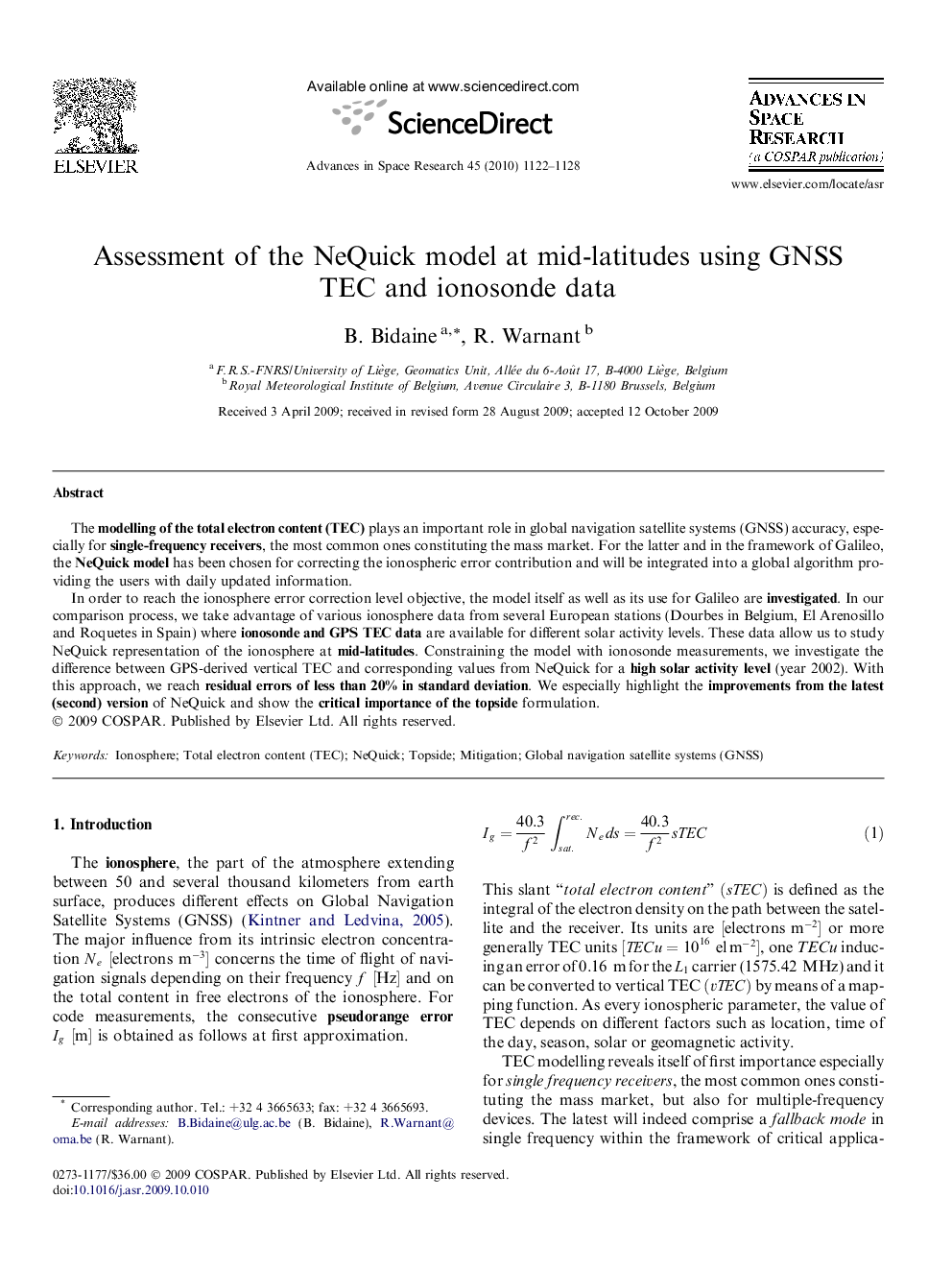| Article ID | Journal | Published Year | Pages | File Type |
|---|---|---|---|---|
| 1765624 | Advances in Space Research | 2010 | 7 Pages |
The modelling of the total electron content (TEC) plays an important role in global navigation satellite systems (GNSS) accuracy, especially for single-frequency receivers, the most common ones constituting the mass market. For the latter and in the framework of Galileo, the NeQuick model has been chosen for correcting the ionospheric error contribution and will be integrated into a global algorithm providing the users with daily updated information.In order to reach the ionosphere error correction level objective, the model itself as well as its use for Galileo are investigated. In our comparison process, we take advantage of various ionosphere data from several European stations (Dourbes in Belgium, El Arenosillo and Roquetes in Spain) where ionosonde and GPS TEC data are available for different solar activity levels. These data allow us to study NeQuick representation of the ionosphere at mid-latitudes. Constraining the model with ionosonde measurements, we investigate the difference between GPS-derived vertical TEC and corresponding values from NeQuick for a high solar activity level (year 2002). With this approach, we reach residual errors of less than 20% in standard deviation. We especially highlight the improvements from the latest (second) version of NeQuick and show the critical importance of the topside formulation.
